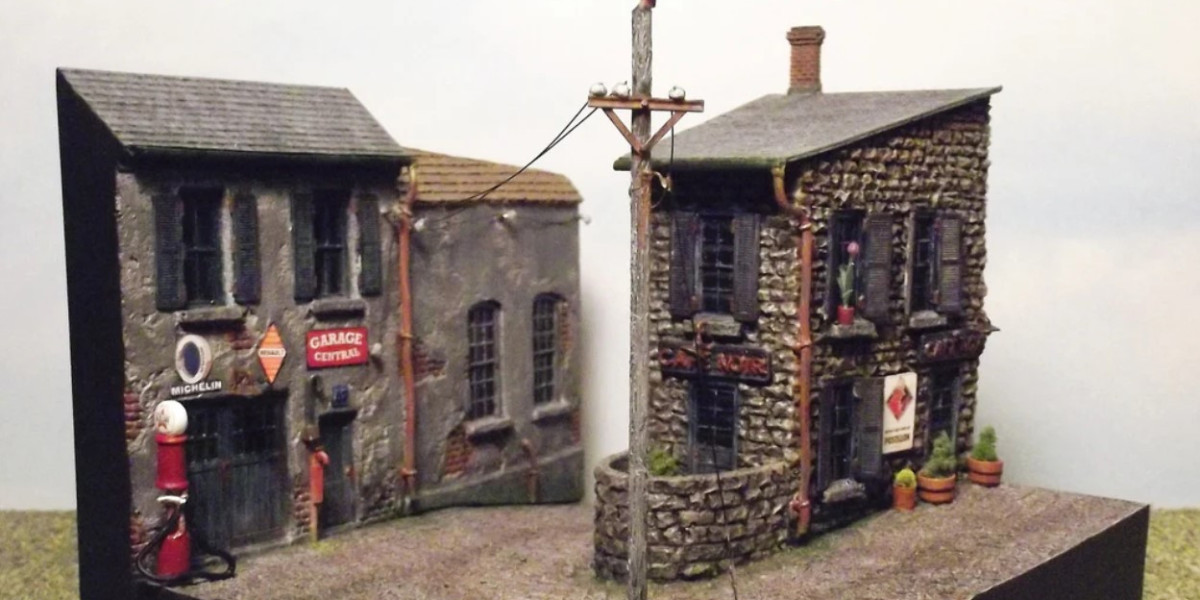Creating diorama kit is an incredibly rewarding hobby that allows enthusiasts to build miniature worlds full of detail, history, and creativity. Whether you're a beginner looking to start your first project or an experienced modeler aiming to refine your skills, mastering the art of diorama scenes requires patience, the right tools, and quality kits. This guide will take you through every step of the process, helping you build realistic and engaging dioramas with ease.
Introduction
Creating dioramas is like stepping into a miniature world filled with endless creativity and storytelling. Diorama kits allow hobbyists to craft realistic scenes on a small scale, whether it's a battle scene from World War II or a peaceful countryside. In this guide, we'll take you through each step, helping you create your first—or next—stunning diorama with ease.
Why Choose Dioramas as a Hobby?
Diorama building isn’t just about assembling small pieces. It's a form of artistic expression. It allows you to tell a story, recreate a moment in history, or simply indulge your creative instincts. It’s also an incredibly therapeutic hobby that promotes focus, patience, and a great sense of accomplishment when finished.
Getting Started with Diorama Kits
Basic Supplies You Need to Start
Before diving into your first project, it's important to gather essential supplies:
Glue: You'll need a good adhesive for assembling the kit pieces.
Paint: Acrylic paints are widely recommended for models.
Brushes: Fine-tipped brushes work best for details.
Cutting Tools: A sharp hobby knife is essential for trimming excess plastic.
Tweezers: Helpful for handling tiny parts.
Choosing the Right Diorama Kit for Your Skill Level
When you’re starting, choose a simpler diorama kit that’s designed for beginners. As you gain confidence, you can graduate to more complex kits that feature intricate details and require advanced techniques.
Brands to Consider for Your Diorama Projects
At Plastic-Models-Store.com, we carry a range of top-tier diorama kits from trusted brands. Here are some of the best:
MiniArt: Known for detailed military and historical diorama kits.
Roden: Specializes in aircraft and military vehicles.
Master Box: Offers kits that combine figures with scenes for added realism.
ICM: Renowned for their quality and attention to detail in historical dioramas.
Step-by-Step Guide to Building Your Diorama
Step 1: Planning Your Diorama
Every great diorama starts with a plan. Decide on a theme, whether it’s historical, fictional, or based on a movie scene. Sketch your layout and list the elements you'll need.
Step 2: Assembling the Base
The base is the foundation of your diorama. It could be as simple as a piece of wood or a pre-made plastic base. Ensure it’s sturdy enough to support your entire scene.
Step 3: Building Structures and Objects
Begin assembling the buildings, vehicles, or figures included in your kit. Follow the instructions carefully, and remember that patience is key!
Step 4: Painting and Detailing
Once your structures are assembled, it's time to paint. Start with a base coat, then layer on additional colors to give depth. Use dry brushing and washes to enhance the texture and realism of your model.
Step 5: Adding Final Touches
The final touches, such as vegetation, water effects, and tiny details like weathering, bring your diorama to life. Experiment with materials like flocking, plaster, and resin to create natural-looking terrain.
The Importance of Scale in Dioramas
Understanding Scale Models
Scale is a critical aspect of diorama building. The most common scales for diorama kits are 1:35 and 1:72. Choose a scale that matches the figures and objects you plan to include.
How to Choose the Right Scale for Your Diorama
Pick a scale that complements the size of your scene and objects. A large landscape with tiny figures may seem disjointed, so balance is key.
Tools You’ll Need for Diorama Building
Basic Tools for Beginners
If you’re new to diorama building, you’ll only need a few basic tools:
Hobby knife
Tweezers
Cutting mat
Brushes
Advanced Tools for Experienced Modelers
For more advanced builders, tools like airbrushes, rotary tools, and precision cutting instruments can elevate your diorama’s quality.
Mastering the Art of Painting Miniatures
Techniques for Painting Miniature Figures
Miniature painting requires finesse. Use a fine brush and layer your colors, starting with a base coat and building up with washes and highlights.
Tips for Weathering and Adding Texture
Weathering adds authenticity to your diorama. Try dry brushing and pigment powders to simulate dirt, rust, or aging.
Enhancing Your Diorama with Accessories
Best Diorama Accessories from MiniArt and ICM
From detailed figures to realistic props like barrels, crates, and plants, accessories add life to your scene.
Creating Realistic Landscapes and Terrain
Materials like plaster, sand, and static grass can be used to create convincing terrain features. Add bushes, trees, and even water effects for greater depth.
Common Mistakes to Avoid in Diorama Building
Avoiding Overcrowding
Too many elements can overwhelm your scene. Focus on a clear narrative and use space wisely.
Proper Use of Colors and Textures
Avoid overly bright colors and stick to natural, muted tones. This makes your diorama more realistic.
The Role of Historical Accuracy in Dioramas
How to Research and Recreate Historical Scenes
Historical dioramas require careful research. Use books, documentaries, and online resources to ensure your scene is accurate.
Showcasing and Preserving Your Diorama
How to Properly Display Your Diorama
Consider a protective case to shield your diorama from dust and damage. Display it in a well-lit area to highlight the details.
Tips for Long-Term Maintenance
Dust your diorama regularly and avoid placing it in direct sunlight, which can fade the paint over time.
Why Buy from Plastic-Models-Store.com?
Plastic-Models-Store.com offers an incredible selection of high-quality diorama kits and accessories from brands like MiniArt, Roden, Master Box, and ICM. Our kits cater to both beginners and experienced modelers, with products that provide excellent detail and durability.
Conclusion
Building diorama kits is an exciting, creative hobby that offers endless possibilities. With the right tools, supplies, and attention to detail, you can craft incredible miniature worlds that tell a story.
FAQs
What’s the best way to get started with diorama kits?
Start with a beginner-friendly kit and focus on learning basic techniques like assembly and painting.Can I customize my diorama beyond the kit?
Absolutely! Many modelers add custom elements, from additional figures to homemade terrain.How long does it take to finish a diorama?
Depending on the complexity, a diorama can take anywhere from a few days to several weeks.Do I need to be an artist to build a great diorama?
No, diorama building is about patience and practice. Artistic skills help, but anyone can learn.What are the best brands for beginners?
MiniArt and ICM are excellent brands for those just starting out, offering detailed but manageable kits.
Our Social Pages:
https://plastic-models-store.com/
https://www.facebook.com/plastic.models.store
https://www.instagram.com/plastic_models_store/
https://www.youtube.com/channel/UCKpiM8Q6k2XjOwN9lW0fOrw








